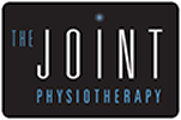Have you ever wondered why adolescents experience growing pains? Where does it come from and how should it be treated?
Written by Katsu Inoue, Physiotherapist at The Joint Physio
Apophysis is a normal bony protrusion located at the growth plate of the skeleton, where muscles and tendons attach onto bones. In rapidly growing adolescents, there is a small lapse between the growth of long bones and the lengthening of their muscles.
Overuse of a “relatively short or tight” muscle (as there may not be true muscle tightness) can result in excessive shearing and traction force on the apophysis, which can then lead to a painful inflammatory condition called ‘traction apophysitis’, often referred to as growing pains. This condition is quite common in adolescents undergoing growth spurts, who actively participate in sports or intensive sporting training without resting enough between training sessions. In rare cases, if children are left untreated and continue to exert excessive force through the apophysis, it can pull away from the bone (an avulsion fracture) which is very debilitating.
The two most common places where this condition can occur are: the bony prominence just below the knee (Osgood-Schlatters Disease), and the heel bone just below the achilles tendon insertion (Sever’s Disease). Physiotherapists are able to accurately diagnose and differentiate from other causes of knee and heel pain with careful monitoring and assessment.


Signs and symptoms of these conditions can include:
- Local tenderness (can usually pinpoint) in tibial tuberosity (Osgood-Schlatters) or calcaneal tuberosity (Sever’s) when load is applied e.g. running or jumping
- No specific incident and gradual increase in pain over time if left untreated
- Usually painless whilst resting
- Pain is activity dependent and usually worse after exercise
- Pain is usually one sided
- Tightness in associated muscles
- Biomechanical abnormalities
It is important to remember that traction apophysitis is a self-limiting condition which means that your child must listen to his or her pain and modify activities accordingly. Unfortunately, even when the pain subsides, there is an inherent risk of your child developing the same condition in future until their bones fully mature (closure of growth plate). However, the earlier your child seeks treatment and manages the pain appropriately, the quicker the pain improves so he/she can return to sports and reduce the chances of causing chronic pain.
Physiotherapy treatment often involves:
- Relative rest and activity modification
- Stretching muscle at appropriate intensity
- Ice and medication if needed
- Improving neuromuscular stability, control and gradual muscle strengthening
- Correcting biomechanics
Just like any other injury, early treatment is crucial for this type of condition. It is important for the prevention of ongoing pain and developing additional comorbidities, which can be harder to treat and will take a much longer time to recover.

